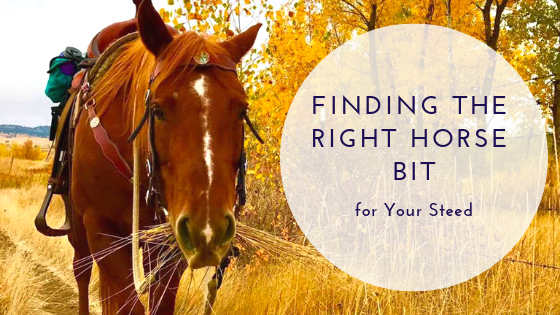Finding the right horse bit for your horse can prove to be an immensely challenging task. There are countless types of bits to choose from and navigating these waters can be harder than you imagine. What size of bit should you buy? What type of bit is best suited for your steed? What about the material of the bit? Is a plastic bit better than a stainless steel one? Here is a breakdown of the most important factors you should consider before you purchase a bit for your horse:
What to Consider Before Buying a Horse Bit
- Some things to keep in mind before buying a horse bit are:
- The size and shape of your horse’s mouth
- How your horse has been trained
- Your horse-riding skills
- The kind of competition you will be engaging in
How to Find the Right Bit for Your Horse
Consider the Size
One cannot overemphasize how important it is to buy the right size of bit for your horse. A bit that is too big will rub uncomfortably against the sides of your horse’s mouth; a bit that is too small will pinch the skin of the horse’s mouth especially at the corners, causing your steed untold pain. An ideal bit should rest comfortably at the corners of the mouth, and the ring should not press too hard against the steed’s cheeks.
The simplest way to know the right size of bit for your horse is to measure its mouth. You can use a string for this purpose. Tie a knot on one end of the string, put the string through his mouth and mark where the string meets the lip on the other side. With this string in hand, you will not go wrong in choosing a bit for your horse.
Consider the Type
There are two major types of horse bits; curbs and snaffles. Snaffles are some of the most popular since they help you communicate with the horse without using too much pressure. They are ideal for those who are only starting to ride horses, as well as for young horses or those with sensitive mouths. Curbs on the other hand have shanks and are a tad more painful than snaffles. They are best suited for experienced riders since the harshness of the bits can cause your horse a lot of pain if used incorrectly.
In addition to the type of bit, you should also pay attention to the thickness of the instrument. Generally, a thin bit will exert more pressure and hence is more suited to older horses and experienced riders. For young horses or inexperienced riders, a thicker bit is better as it causes the horse much less pain.
The Material
Horse bits are made from a wide array of materials, all of which have pros and cons. Stainless steel bits for example are very durable, have a neutral taste and are resistant to rust. On the flipside, they tend to be rather cold and don’t encourage mouthing. Copper brass bits on the other hand are susceptible to rust, which is a good thing since it produces a sweet taste which encourages salivation for horses. Plastic bits are warm, lightweight and often encourage mouthing, but they can be susceptible to biting which can render them useless.
Although finding the right horse bit can be overwhelming, it is certainly not impossible. Start by measuring your horse’s mouth to know what size of bit to buy. Then consider your riding skills and buy a bit that helps you communicate most effectively with your steed. Start with the gentlest bit and advance as the situation changes. If you follow these tips, you will not go wrong.



















